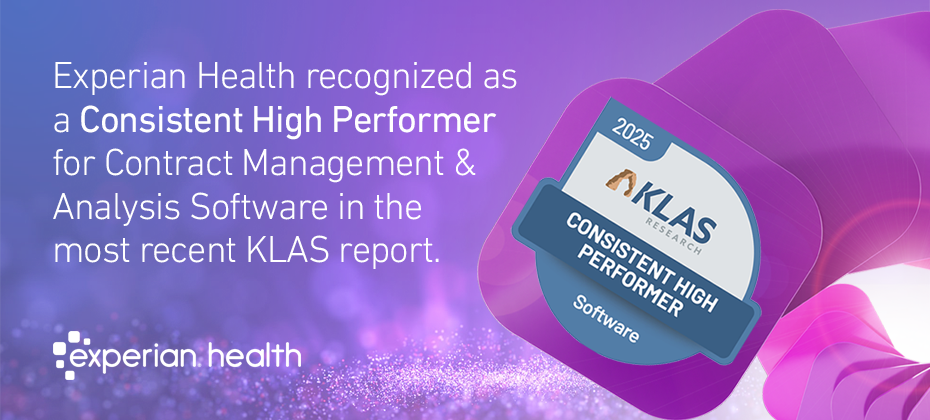
Collecting payments from patients has always been tough. Confusing bills, missed reminders and affordability concerns often lead to delays. Billing teams get bogged down in follow-up calls and paperwork, leaving little time for complex cases and a big question mark over whether they’re using their time efficiently. As patients shoulder a greater share of their healthcare costs, there’s increased pressure to make billing more accessible, transparent and manageable. Could automation be the answer?
This article looks at how automation can simplify patient collections for everyone. With faster reminders, more accurate estimates, tailored payment plans and efficient collections management, providers can improve the patient experience and increase collections simultaneously.
The importance of automation in patient collections
One of the biggest frustrations for billing staff is seeing patients struggle to pay their bills. Medical costs can be daunting, and as patients are confronted with rising prices at the gas pumps and grocery stores, they may feel forced to delay healthcare payments or forego care altogether.
Complicated bills with unclear charges and terminology only compound the problem: Experian Health’s 2024 State of Patient Access (SOPA) survey found that 69% of providers see patients postpone services when they don’t understand the financial impact. Many patients are able to pay their bills, but need clearer and more flexible payment options.
In their attempts to support patients, billing teams spend a lot of time managing routine tasks like sending reminders, setting up payment plans and fielding questions about bills and unresolved insurance issues. What if these tasks could be handled automatically? There are opportunities to take advantage of automation, advanced data analytics and artificial intelligence in just about every corner of the collections process. Providers integrating automation in patient collections find it easier to help patients keep up with payments and maintain a steady cash flow — without draining staff resources.
The benefits of automation for patient collections
Here is a run-down of a few key automation benefits for patient collections:
1. Clearer billing, which boosts better cash flow
In the SOPA survey, 88% of providers recognized that upfront price estimates contribute to collections success. Automation makes it easier to calculate accurate estimates based on the provider’s current prices and the patient’s specific insurance benefits. With user-friendly bills, patients can quickly grasp what they owe without needing to ask their provider for clarification.
Automated systems can also issue friendly reminders to patients via text or email so they don’t miss payment deadlines. Including quick payment links allows patients to click and pay in an instant.
2. Personalized payment options, which create a compassionate and convenient patient experience
A survey by Experian Health and PYMNTs found that patients welcome tailored payment plans that allow them to pay their bills in stages. This is backed up by SOPA findings, which show that 40% of providers have seen reduced friction in patient intake thanks to payment plans. Automation can be used to calculate customized options that fit different budgets. Aligning payment plans to the patients’ ability to pay improves the consumer experience and minimizes bad debt.
Today’s consumers want to choose how they pay for care, yet many providers lack the online and mobile-enabled payment options to support fast and convenient payments. With automation, healthcare organizations can enable multiple secure payment methods across their services and departments, giving patients more hassle-free ways to pay.
3. Increased efficiency, which reduces the admin burden for staff
With automation handling routine billing tasks, staff can spend less time on paperwork and more time on patient care, leading to a more efficient and patient-focused service.
Overall, automation creates a smoother billing experience. Patients appreciate clear information, convenient payment options, and timely reminders, which makes them more satisfied with their care.
Key tools and technologies for automating patient collections
When building a toolkit for automated patient collections, providers can choose from a growing range of technologies. For example:
1. Analytics-based collections optimization
One way to simplify patient collections is to use data analytics to screen, segment and prioritize self-pay accounts so that each one can be handled in the most efficient way. Collections Optimization Manager screens patient accounts for bankruptcy, deceased status, Medicaid, and charity so staff can focus on higher-yield accounts. After screening, accounts are given a score based on the patient’s propensity to pay and then routed to the most appropriate servicing channel. Users can access real-time dashboards and expert consultancy support to monitor and improve collections strategies. This improves the experience for patients, reduces repetitive manual work for staff, and maximizes collections while reducing the overall cost to collect.
See it in action: How Wooster Community Hospital collected $3.8M in patient balances with Collections Optimization Manager
2. Financial aid automation
Many patients with high out-of-pocket costs and co-pays are unaware that they might be eligible for financial assistance. By using Experian’s comprehensive data, Patient Financial Clearance automatically determines which patients may qualify for financial assistance and even auto-enrolls them in relevant programs. To make this process as easy as possible for patients, the tool prompts them to complete applications whenever it is convenient, either online or through their smartphones. This releases staff from time-consuming manual work and accelerates approvals and payments. In addition, the tool creates individualized payment plans that account for what the patient is likely to be able to afford, thus helping providers collect from patients who do not qualify for charity support, too.
See it in action:How Eskenazi Health boosted Medicaid approvals by 111% with financial aid automation
3. Automated upfront, accurate estimates
For patients with out-of-pocket bills, getting ahead of any surprise charges with accurate pre-service estimates is essential. Patient Estimates is a web-based pricing tool that pulls together every last detail about chargemaster pricing, payer contracts, insurance benefits and financial assistance policies to generate an accurate estimate for patients. It applies any prompt-pay discounts or payment plans so the patient knows what to expect. Helping patients understand and prepare for forthcoming bills smooths out the payment process and leads to more revenue being collected, sooner.
4. Digitally enabled payment technology
The patient-friendly collections experience can be rounded out by offering a choice of digital-first payment methods. PaymentSafe® allows providers to securely accept patient payments at any time, expanding the number of collection points available to patients. The tool automatically integrates data from across the payments ecosystem to pre-populate fields in the patients’ accounts, allowing them to pay multiple bills at once, and automatically settles and remits payments. Making it easy for patients to pay accelerates payments, including before and at the point of service.
The future of patient collections through automation
Bringing together automation and patient collections will continue to simplify and make these processes more patient-friendly. Automation and digital tools will enable more self-service options, making it easy for patients to manage bills, choose payment plans, and make payments at their convenience. Moving toward greater transparency and personalization will also give patients more control.
Emerging technologies such as predictive analytics, machine learning and artificial intelligence will give providers greater insights into their patients’ financial needs, so they can offer proactive and compassionate support to navigate the process. As these trends gather steam, patient collections will become faster, more adaptable and better aligned with the needs of today’s healthcare consumers.
Find out more about how simplifying patient collections with automation can improve patient experiences and increase collections.


